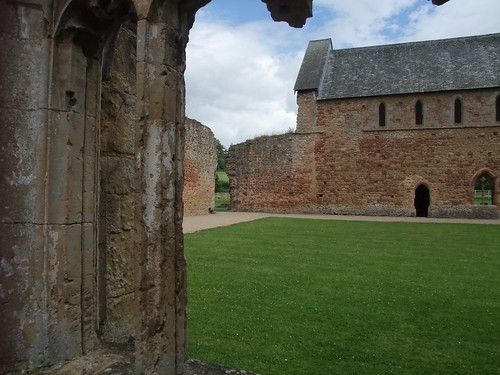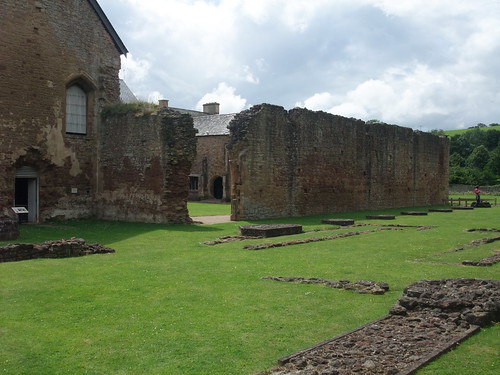I visited Cleeve Abbey in August. Like my trip to Blakeney, visiting Cleeve provided a welcome respite during a week of frantic cooking and preparing activities, this time near Minehead.
Cleeve was a Cistercian Abbey. The Cistercian Order was formed at the very end of the eleventh century in eastern France and spread across Europe in the twelfth-century. Cistercians were characterised by their white habits and dedication to manual labour. Famous abbeys of the order in Britain include Fountains, Furness, Melrose, Rievaulx and Strata Florida. During its lifetime as an abbey, Cleeve wasn't very important - it was the daughter house of Revesby Abbey in Lincolnshire, but located in a fairly remote Somerset valley. However, as a heritage site it is remarkably well-preserved. And by 'remarkably well-preserved' I mean that some of the buildings still have roofs.
The church was demolished during the Dissolution of the Monasteries, but the other buildings were converted into a manor house. Over the centuries, the importance of the tenants decreased until the 19th century when it was occupied by farmers. Its importance as an historical site was identified by George Luttrell of nearby Dunster Castle in the 1870s, who acquired it and conducted archaeological excavations, making the site into a tourist attraction. Today it is managed by English Heritage. I am a member, so got in for free.
It was a wet day and I ignored the instructions of the man in the ticket office and explored outside first, while there was a break in the rain.
This photograph shows the recovered foundations of the abbey church, into the cloisters with the dormitory as the two-storey building on the left. It was very peaceful outside, I think the rumbling sky and the fairly isolated location had put off most visitors.
Beside the abbey site were fields filled with sheep - a reminder that the Cisterican order didn't just pray and copy manuscripts, but were also manual labourers. Though the spiritual importance of the site was removed by Henry VIII, it still remained a fertile valley where sheep could be reared.
Although most of the inside of the abbey consisted of cavernous, empty rooms with descriptions and pictures of what they might have looked like when the abbey was operating, there were still a few gems. A medieval wall painting in one of the rooms, sealed off from visitors so that the environment could be controlled to preserve the painting, and a carved ceiling in the refectory. In the long dormitory, several of the window sills were covered with medieval tiles and outside, beneath a marquee, there was a whole uncovered floor of heraldic tiles.
Cleeve Abbey isn't a grand palace that demands your attention. Instead, it is a quiet, peaceful place, with cracked tiles and vast empty rooms. Stripped of its wealth, it has still retained its dignity. Elsie J Oxenham, author of the 'Abbey' series was inspired by the site and so was I.















0 thoughts:
Post a Comment